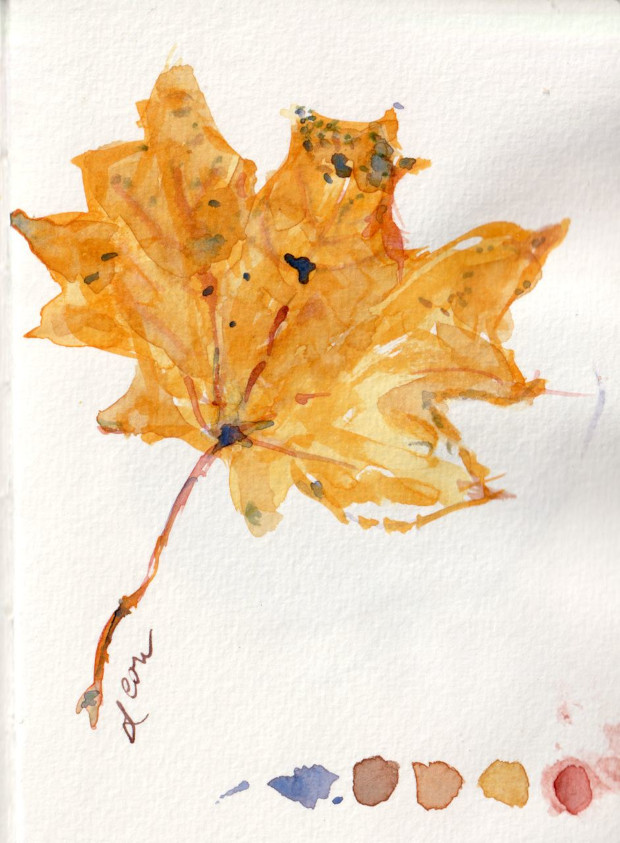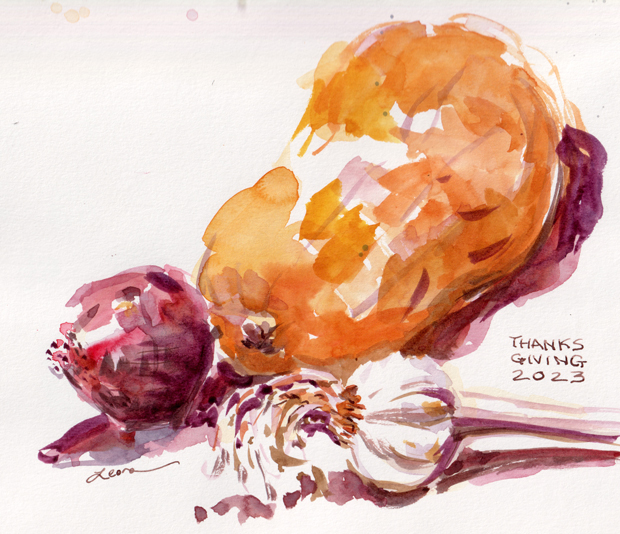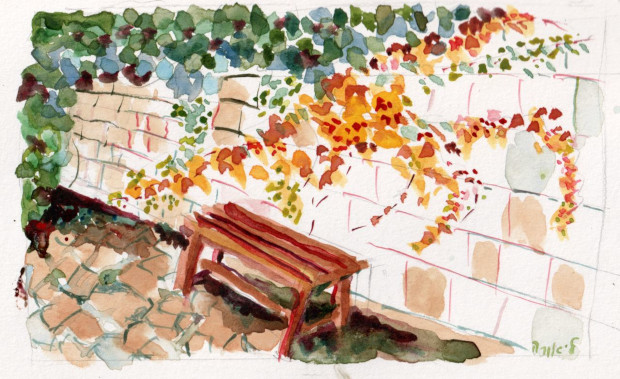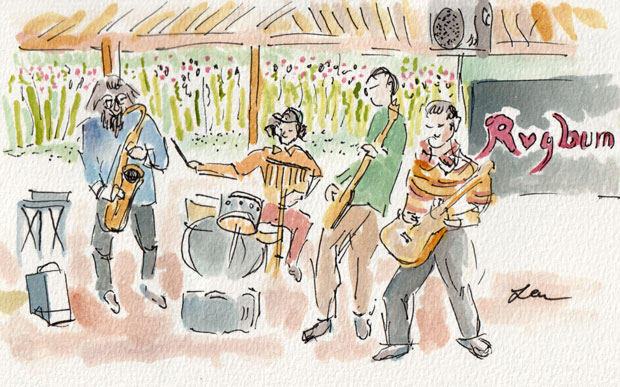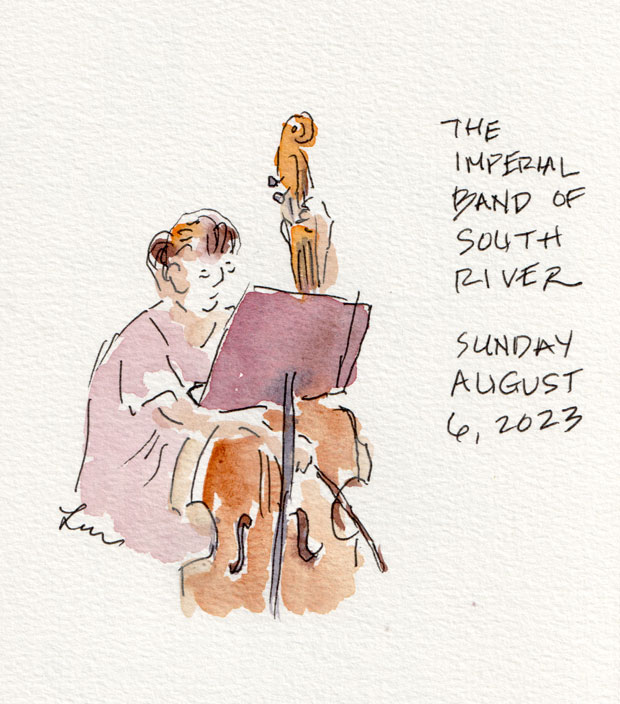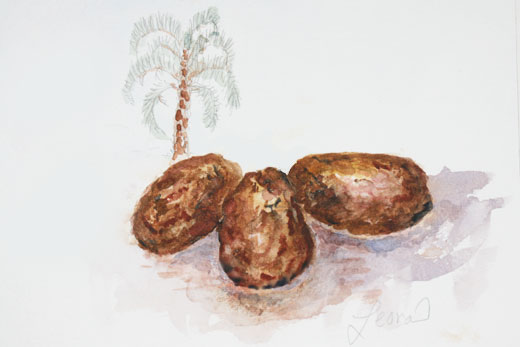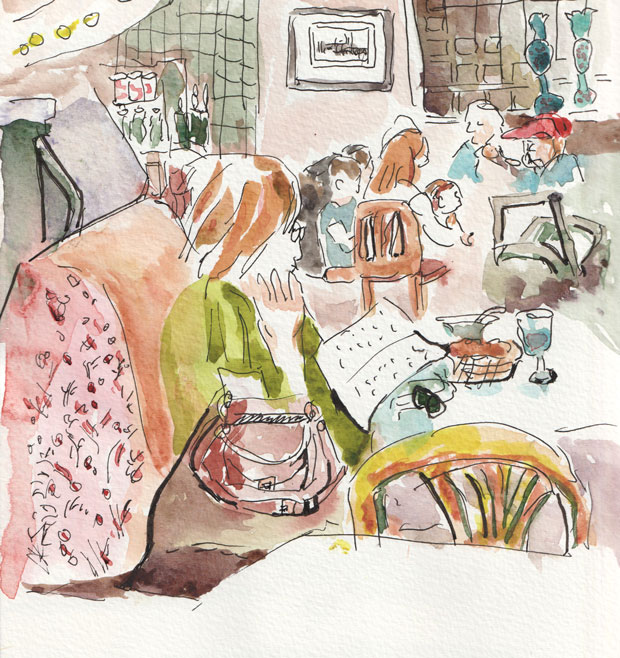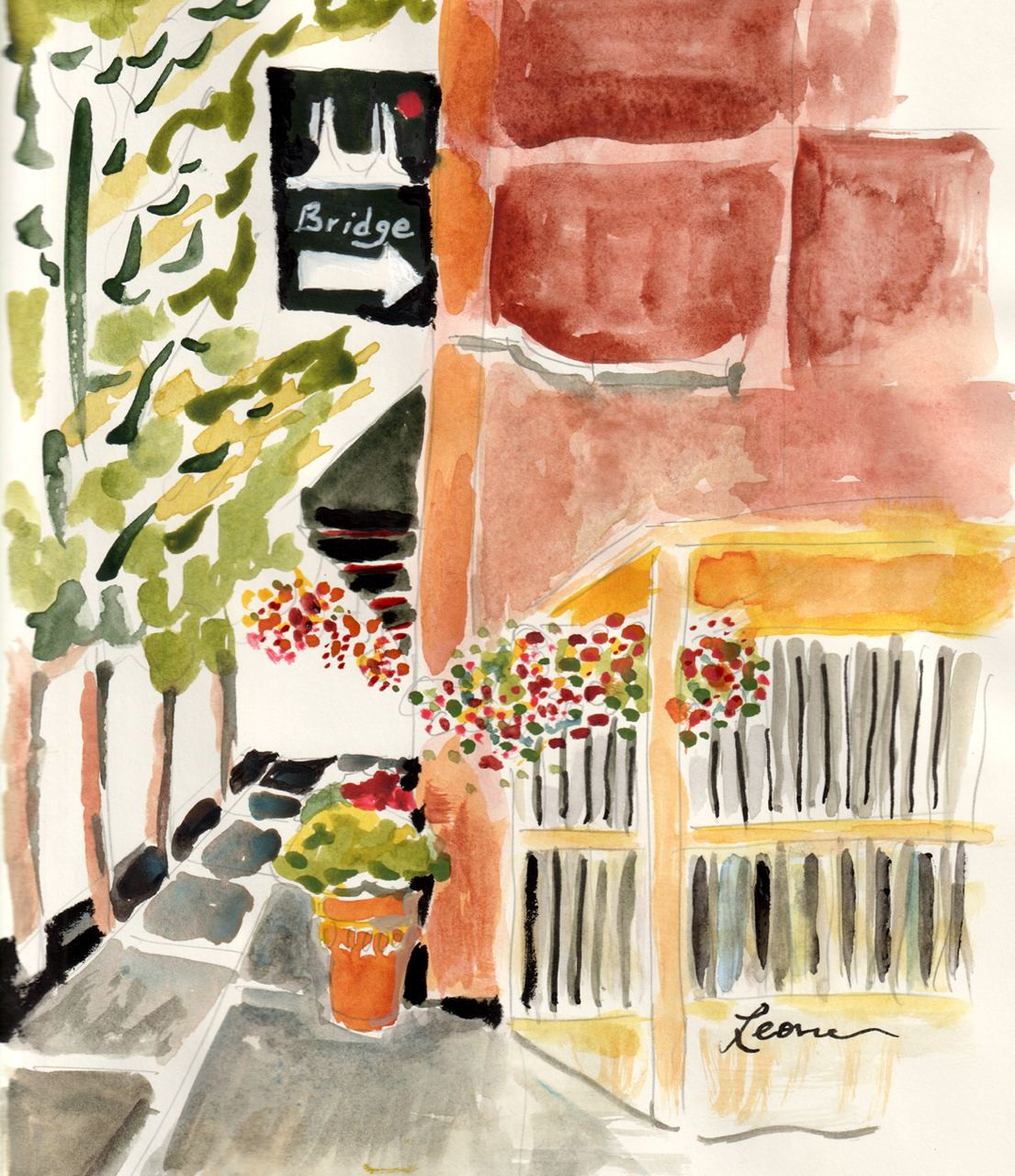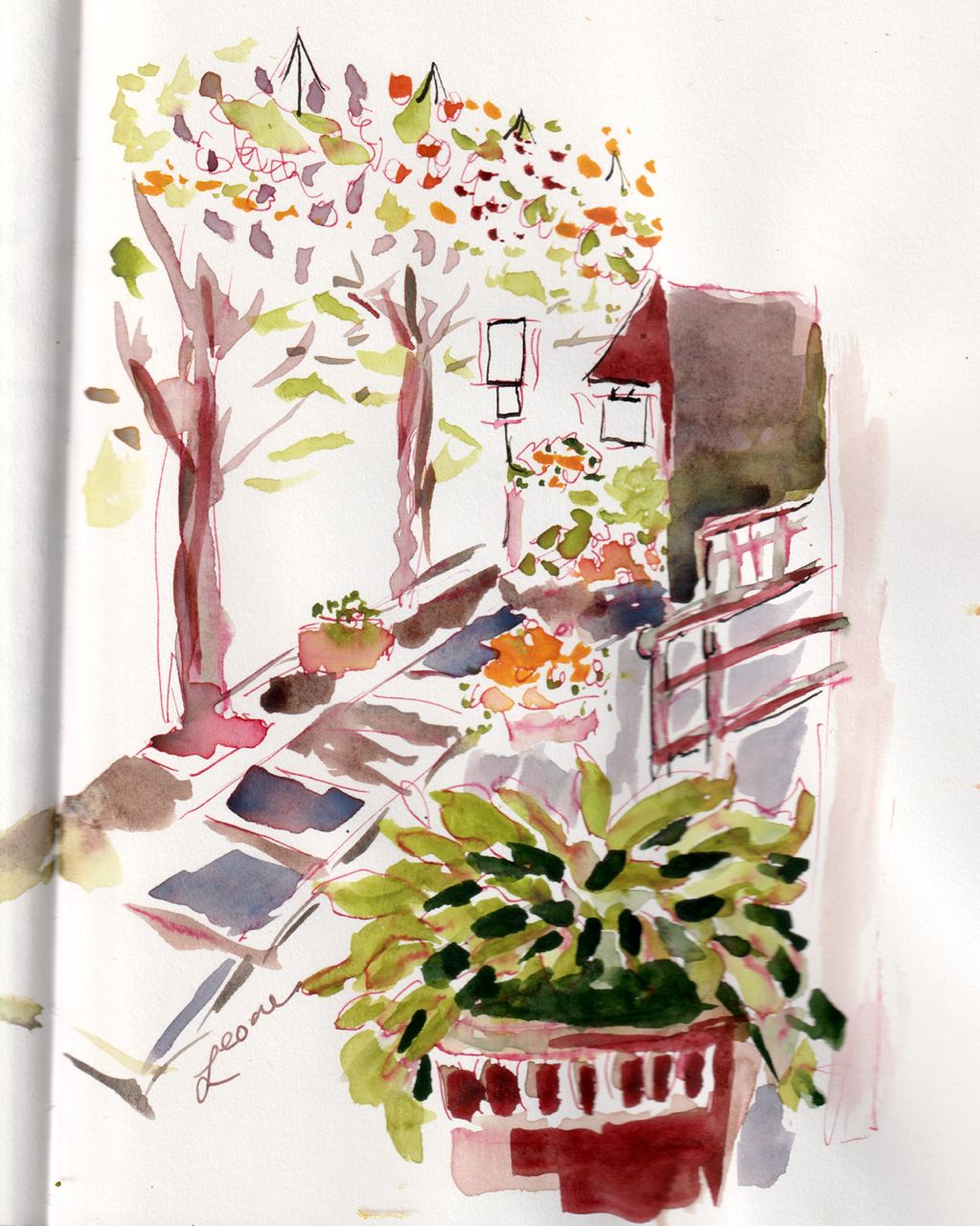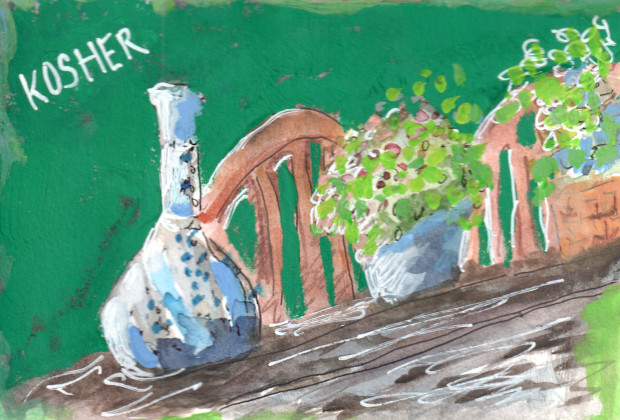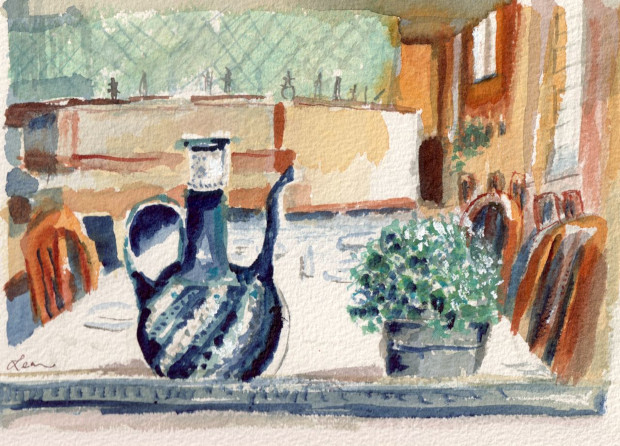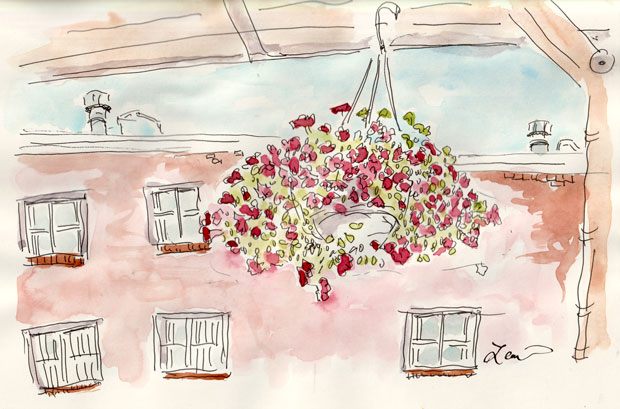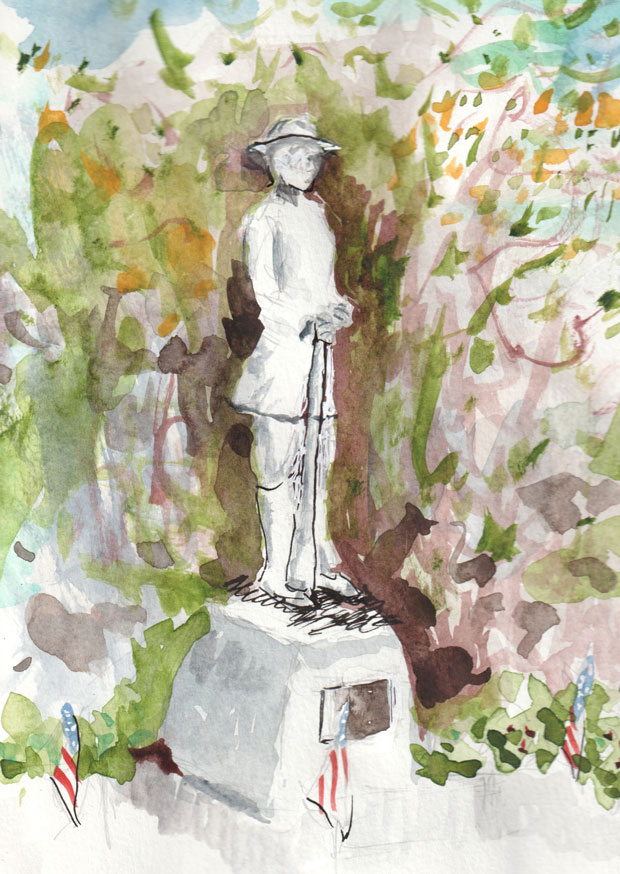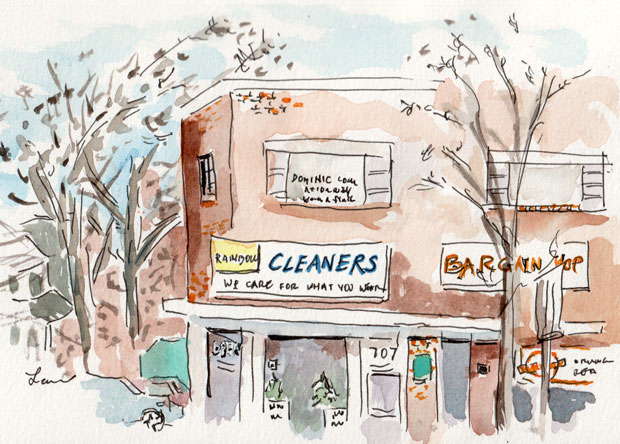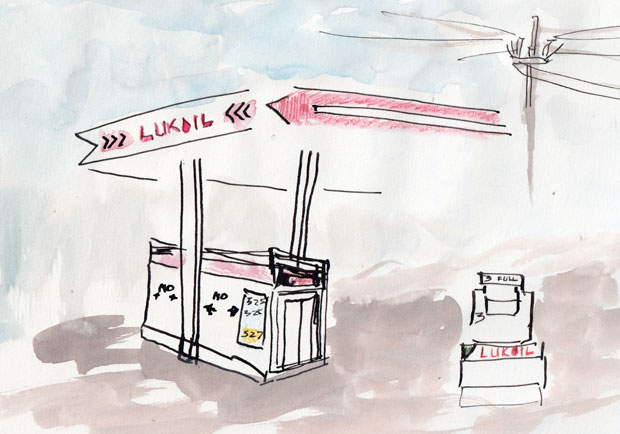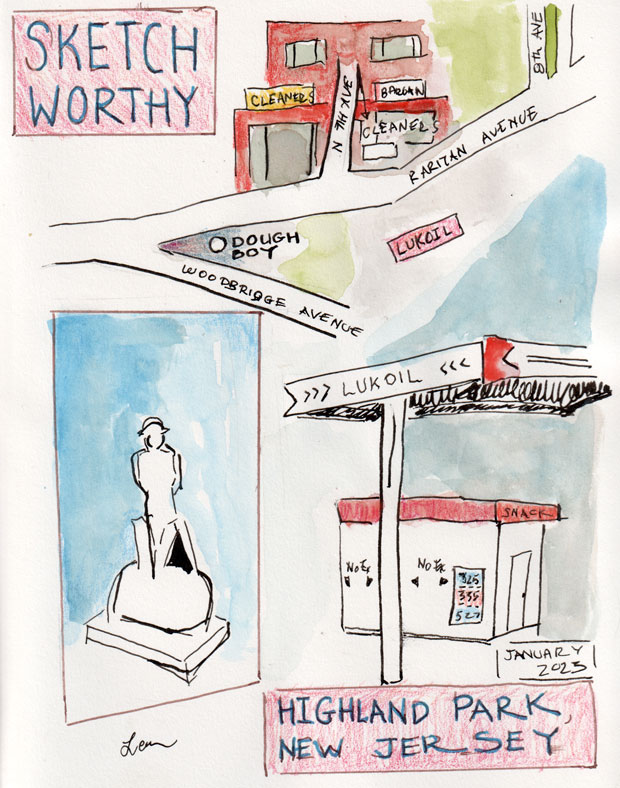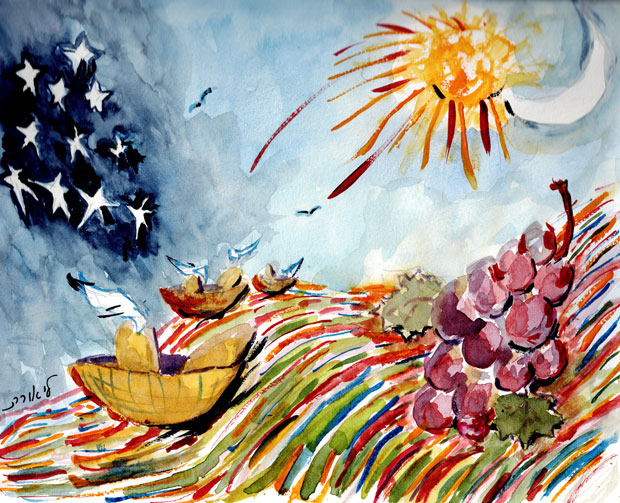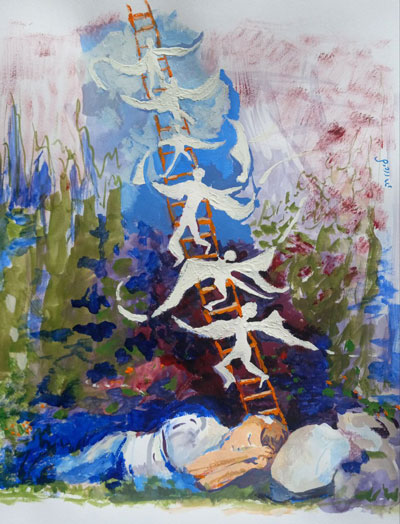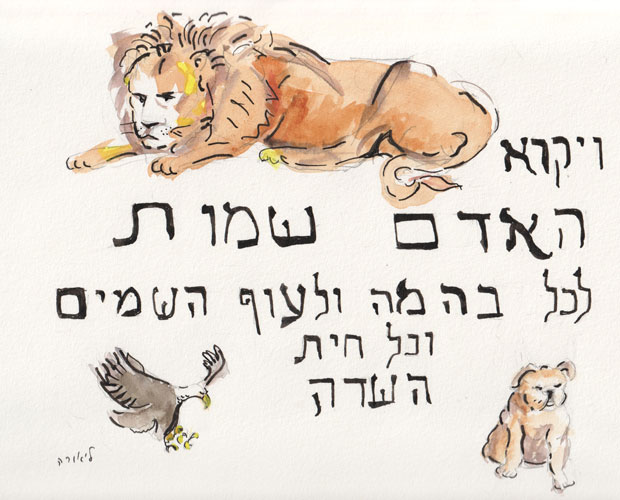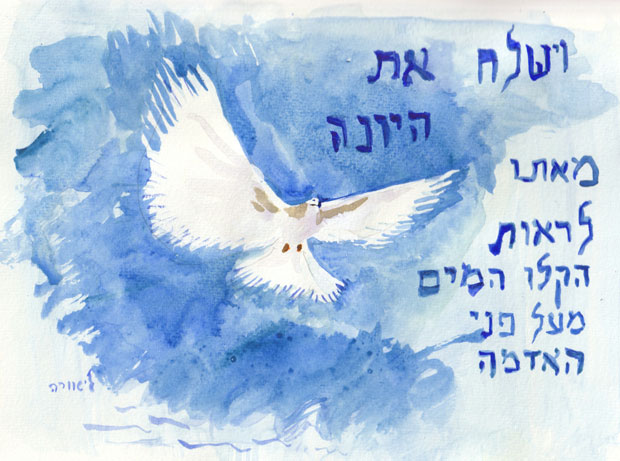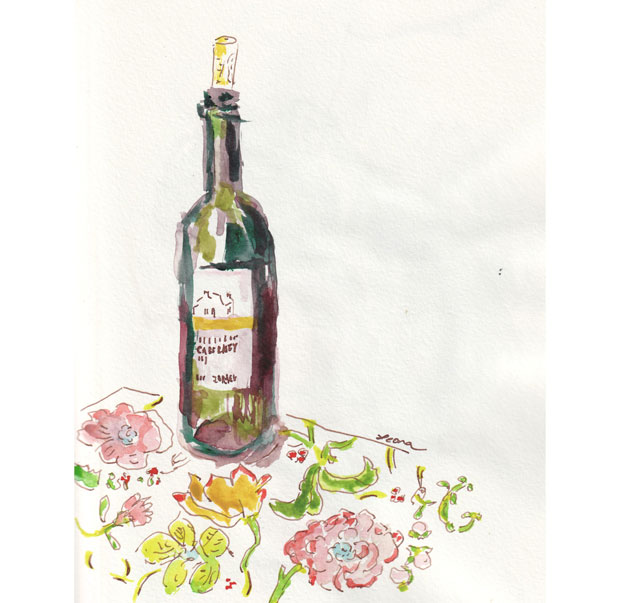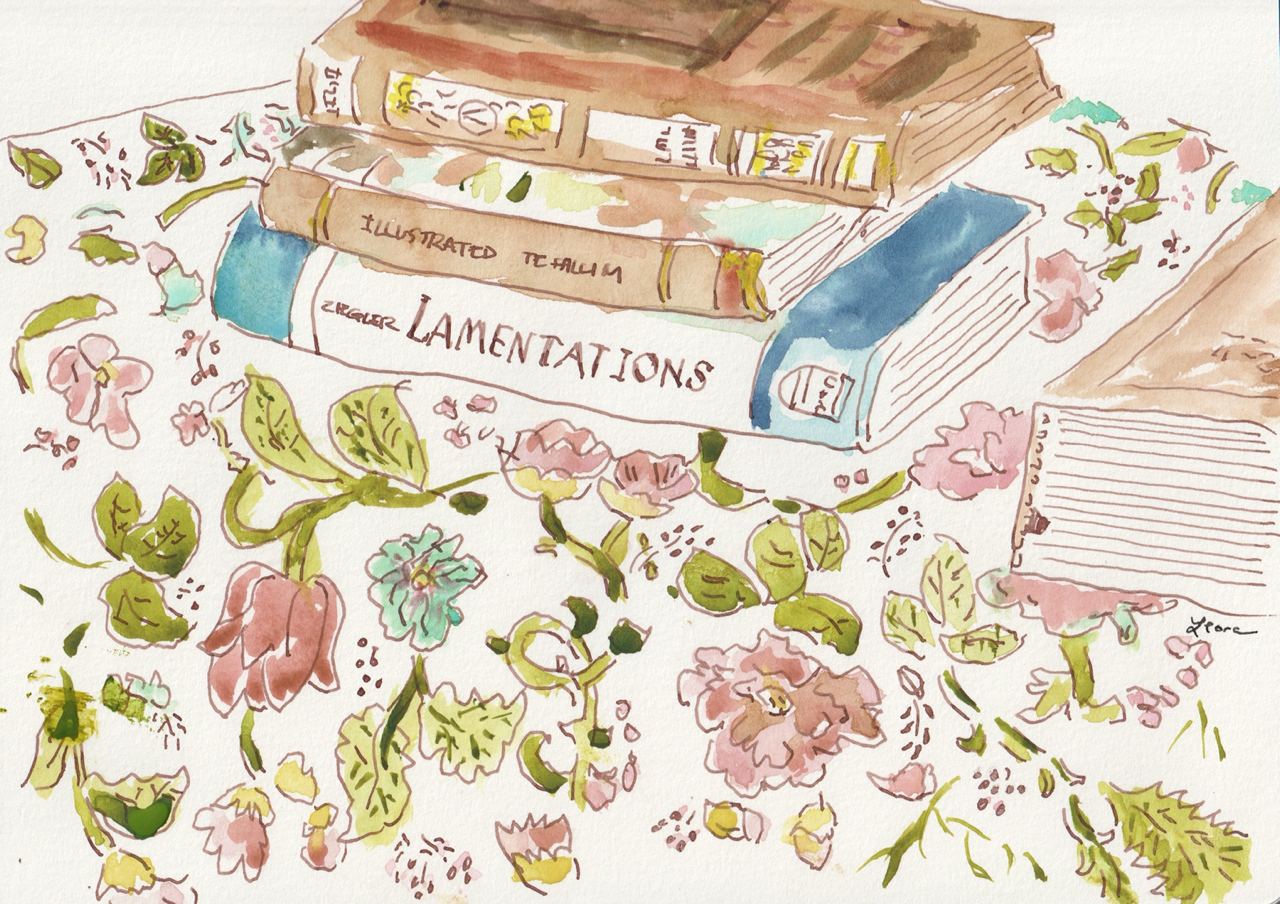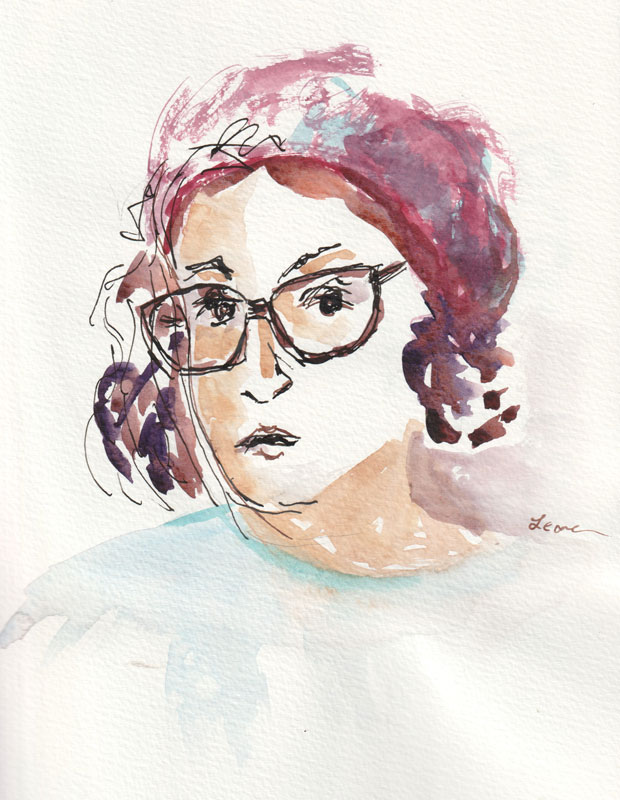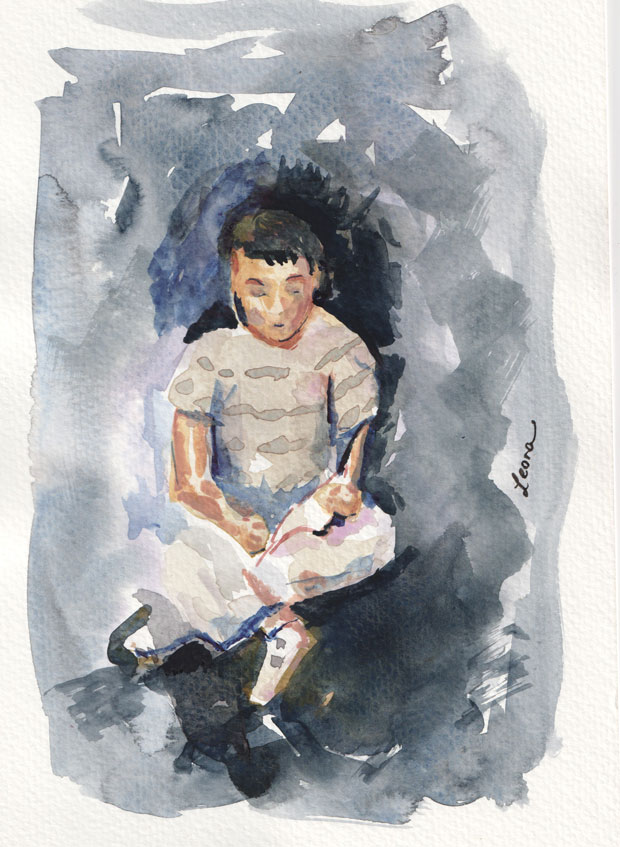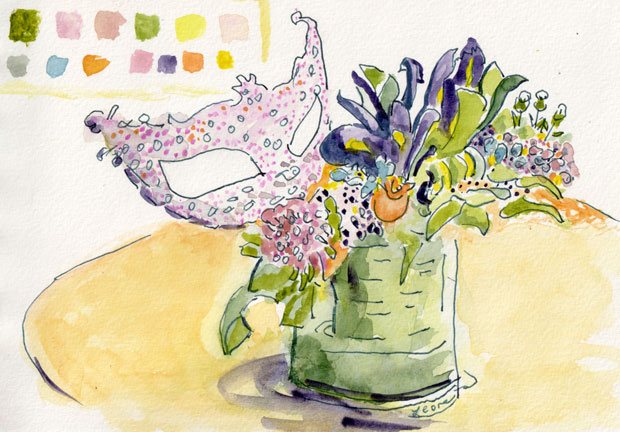
I painted the bouquet of flowers (note the purple irises and the mask) that I bought from Roberts Florals in Highland Park, New Jersey on Purim. My guests enjoyed the bouquet along with the meal. I am relatively pleased with the result of the painting.
My current ultimate goal is to get better at painting portraits. I am confident in my flower painting abilities. I could improve in details, but I do not strive to be a realistic floral artist. One reason I chose to paint the bouquet is it was a good warm up to painting after Shabbat and after a week of little painting in general.
Why I failed miserably at 100 people week
Early in March there was a competition to draw or paint 100 people in a week. My start was delayed by Purim; I had lots of preparations to do for the holiday, and guests showed up to entertain us at our seudah (festive meal). Finally, I went out one day with my sketchpad and doodled quite a few people. I did not care much for the result, so it is not getting posted here. Then I ran out of time to go outside and look for people. So I went up to my attic late one night, and I took down several photos of people that I found inspirational.
How 100 people week Inspired Portraiture Adventures
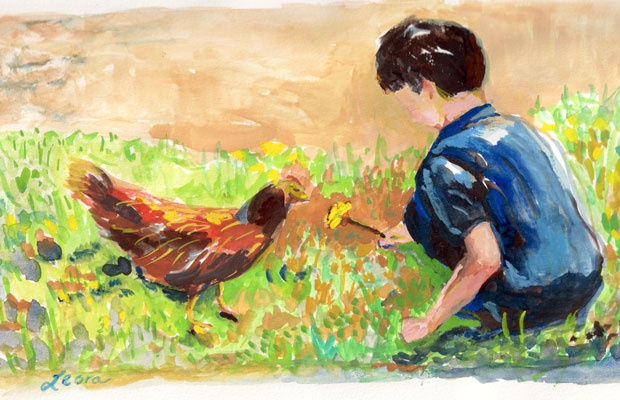
One of the photos that I found was one of my sons showing a dandelion to a chicken. I did one quick sketch; the proportions of the head were off. I started another. I continued painting into the night, and I am please with the result: gouache media, lots of strokes and movement. I like how the light falls on the figures and the variety of hues established.
Here is another portrait that I did, from an old black and white photo of a relative eating soup. This portrait is also done with gouache. Maybe I will do another version in the future with more attention to the background.
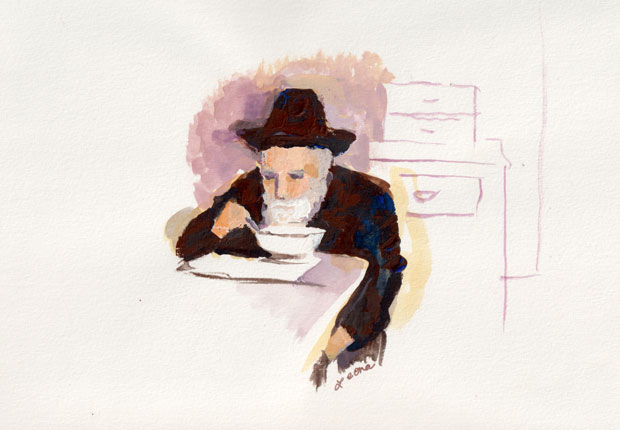
More Flowers to Show
Whenever I go shopping with a certain friend, I am done long before she is. No problem! Each store seems to have a section of flowers. So I put my paid groceries in the car, and I return to draw with a Uniball pen whatever strikes me in the store. Often, the flowers stand out. Here are a few of my favorites:
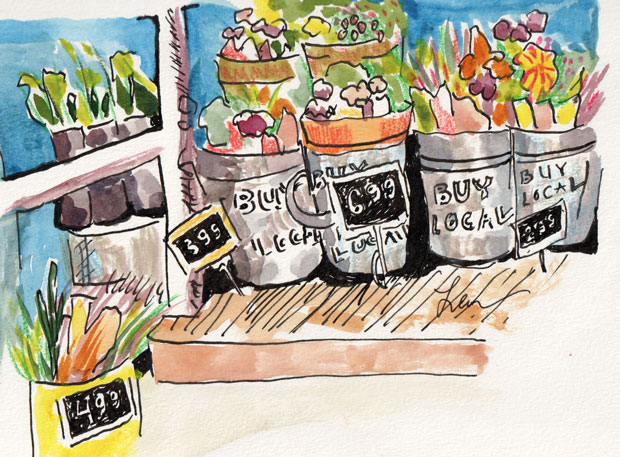
This one was painted after another one that had the brand name of a large chain store got rejected from an online shop that sells artists’ goods. Lesson learned: buy local flowers. Advertise local stores. No need to ruffle the feathers of any large chain stores.
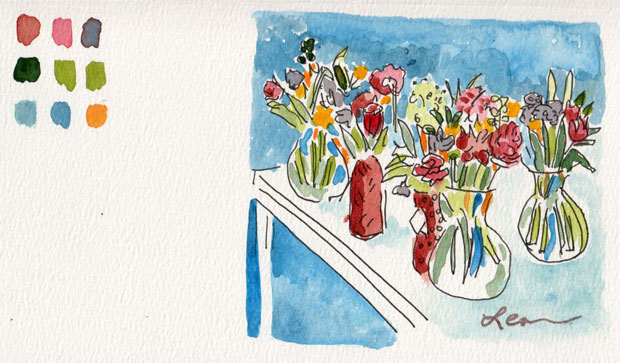
I often like painting a palette of colors near my watercolors. This palette compliments the flowers nicely, organic flowers shapes near geometric squares.
More on Painting Flowers
I am reading Painting Flowers in Watercolor with Charles Reid, a classic in the watercolor book world. Two ideas that I look forward to incorporating in future watercolor floral sketches or paintings:
1) Pay attention to negative shapes that the flowers make almost as much as to the flowers themselves. Do not overwork the details. Paint the background along with painting the flowers. The background should not be an after thought.
2) When painting the background, don’t do one solid expanse of one color. Do a variety of color in a mix that compliments whatever flowers one is painting.
Charles Reid uses a lot of cadmiums in his palette (Cadmium Yellow, Cadmium Orange). I will substitute colors in my palette, probably Hansa Yellow (light, medium, or dark) and New Gamboge. One exercise is to paint daffodils. Another is techniques for white flowers. Daffodils and magnolias are in bloom now. Hopefully, I will be able to experiment with his ideas.
It is now the Jewish month of Nissan. In Nissan we celebrate freedom on Passover. We are also commanded to say blessing on a fruit tree when it shows its first blossoms. I will be looking around my neighborhood for all kinds of blossoms for blessings and for sketches.

